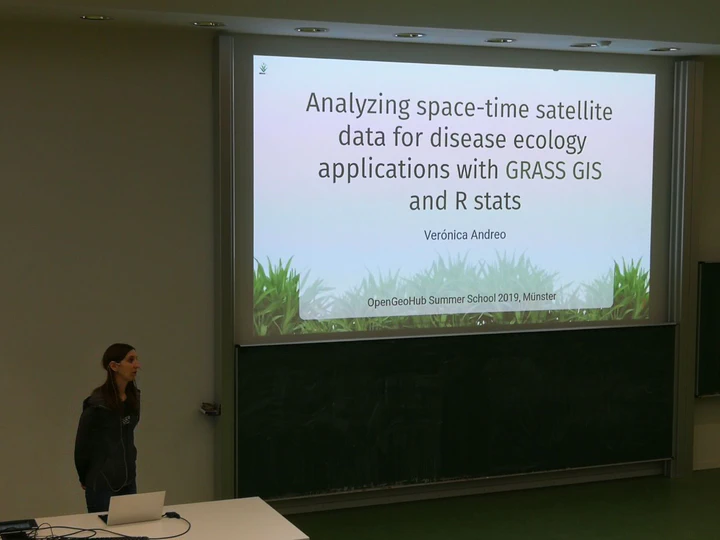Analyzing space-time satellite data for disease ecology applications with GRASS GIS and R stats
 Image credit: Santiago Rodriguez
Image credit: Santiago Rodriguez
Abstract
GRASS GIS is a general purpose Free and Open Source geographic information system (GIS) that offers raster, 3D raster and vector data processing support. Since 2015, GRASS GIS has also oficially incorporated a powerful support for time series (TGRASS). Through this, GRASS GIS became the first open source temporal GIS with comprehensive spatio-temporal analysis, processing and visualization capabilities. This functionality makes it easy to manage, analyse and visualize for example climatic data, vegetation index time series, harvest data or landuse changes over time. Time series are handled through new data types called space time data sets (stds) which are used as input in TGRASS modules. In this way, TGRASS simplifies the processing and analysis of large time series of hundreds of thousands of maps. For example, users can aggregate a daily time series into a monthly time series in just one line; get the date per year in which a certain value is reached; select maps from a time series in time periods in which a different time series reaches a maximum value, perform different temporal as well as spatial operations among time series, and so much more. In this session we will explore the combined use of GRASS GIS and R. We will use a daily time series of LST (thanks to mundialis) to extract relevant environmental variables for a mosquito species that transmits West Nile virus in Northern Italy. Particularly, we will use TGRASS to estimate bioclimatic variables such as those from Worldclim, start, end and length of mosquito season, number of consecutive days with a certain LST value, number of potential mosquito generations, etc. We will then import our vector and raster maps into R and proceed with the modeling and prediction. All the material is available at https://github.com/veroandreo/grass_opengeohub2019.